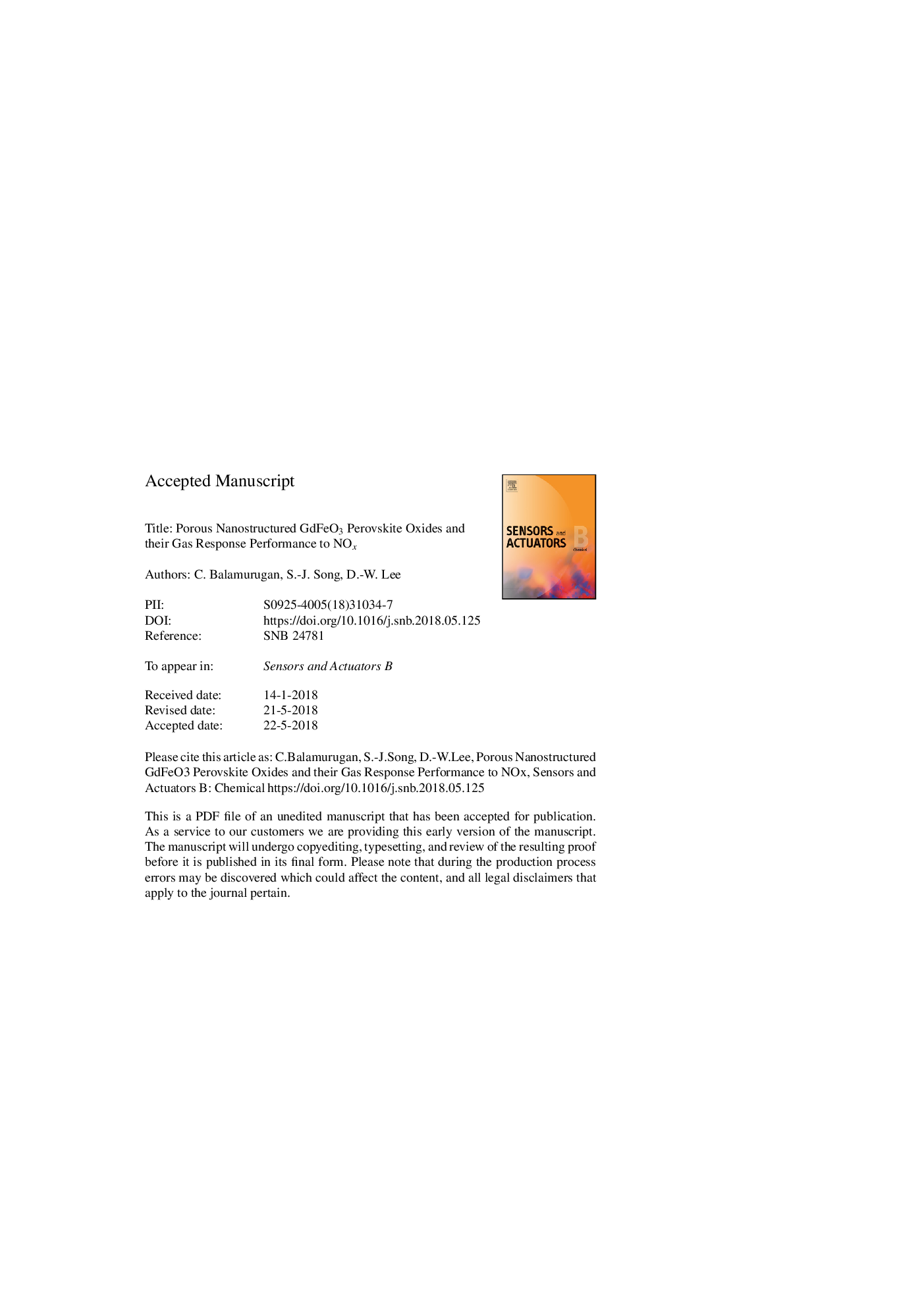| Article ID | Journal | Published Year | Pages | File Type |
|---|---|---|---|---|
| 7138920 | Sensors and Actuators B: Chemical | 2018 | 44 Pages |
Abstract
Gas sensing characteristics of rare-earth-based orthoferrite (GdFeO3) mesoporous nanostructures were prepared by a facile one-step hydrothermal process. The structural analyses of the obtained materials showed sphere, leaf and flower-like nanostructured architectures. Further, the chemiresistive gas-response properties of the GdFeO3 nanostructure were investigated with various combustible gases, such as nitric oxide (NO), nitrogen dioxide (NO2), carbon monoxide (CO), ammonia (NH3), hydrogen sulfide (H2S), formaldehyde (HCHO), ethanol (C2H5OH) and gasoline, at different operating temperatures. The sphere-like GdFeO3 nanostructure shows a significantly high resistance variation to NO compared with the other architectures, exhibits a high response (91%) when exposed to 100â¯ppm NO, and detects a level as low as 2â¯ppm (7%) at an optimum operating temperature of 140â¯Â°C. The GdFeO3 nanostructure shows an excellent stability and repeatability after successive repeated cycles with a fast response and recovery time when exposed to 100â¯ppm NO gas. The superior response and excellent selectivity of the perovskite GdFeO3 nanostructure are due to its higher catalytic activity, large surface area, oxygen deficiency, mesoporosity, and peculiar morphology. The response mechanism of NO on the GdFeO3 nanostructured surface is also discussed in detail.
Related Topics
Physical Sciences and Engineering
Chemistry
Analytical Chemistry
Authors
C. Balamurugan, S.-J. Song, D.-W. Lee,
